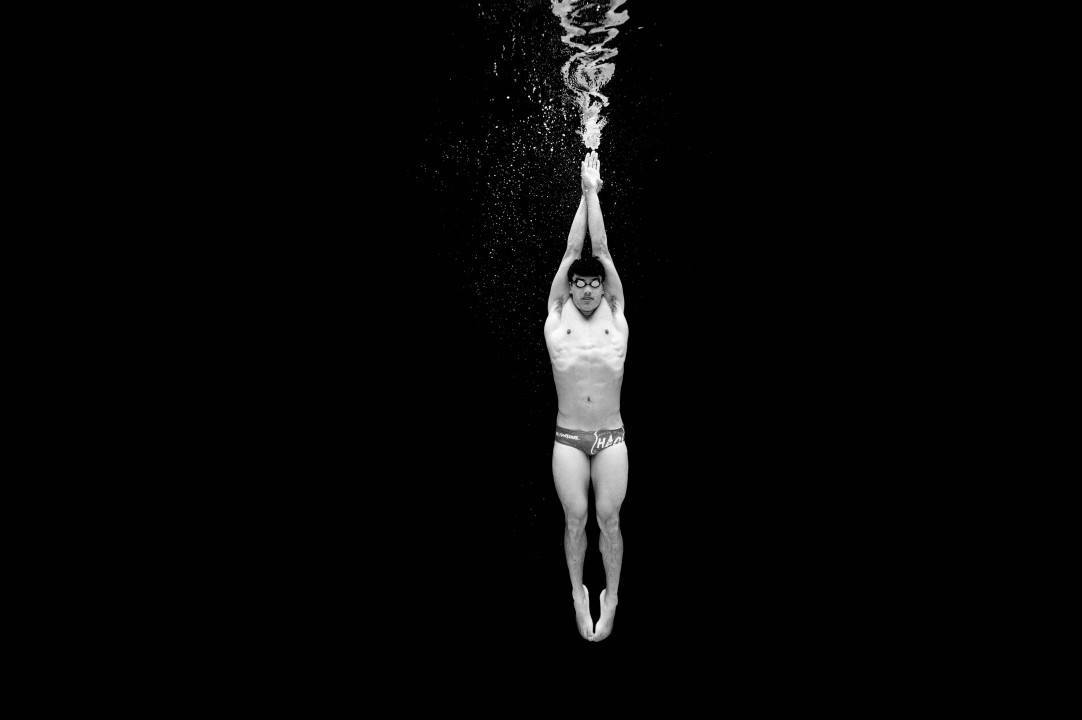Courtesy of RITTER Sports Performance, a SwimSwam partner
It doesn’t matter how great your kick, pull, or training is. Without being able to hold proper body positioning in the water, your force just dissipates and your goals seem to slip out of reach.
I’m sure you have heard the phrase, “no wet noodles down the pool.” You have added crunches, planks, and other “core” exercises but still lack the transfer to body positioning in the water.
Is there any hope? What are you missing?
You might be attacking core stability incorrectly. Here are some helpful tips for you to improve your body positioning in the water.
Start With Your Hip Alignment
Do you walk around with a major arch in your low back? The first thing to think about is your body alignment on land. Whatever you’re doing on land, you’re most likely replicating in the water. An over-arched low back can lead to back pain during swimming, especially during flip turns. If you go from an arched to rounded position rapidly, your low back could tense up and you’re looking at a few days where you struggle to sit down.
One of may favorite exercises to help with this is a supine wall press! This will help you focus on your back positioning and help get the painful arch out of your low back. Be very active with this movement. You should be pressing hard into the wall to engage the shoulders and upper back. Exaggerate your core tension and pack your musculature around your spine. Move with intent.
The next thing is to think about your body alignment while doing a basic plank. When doing planks, we often forget the small details. Next time you do a plank, think about your head positioning, lat engagement, and your low back. For example, do you want to look up while swimming, plowing through the water with your forehead? No! Then don’t do it on planks. Practice the head positioning you want to mimic in the water.
As for your lats, we make planks such a passive movement when it should be active. Next time, think about driving your elbows towards your knees (without physically moving). This will make your lats turn on and completely change the feel of the plank. When else do you want lat engagement during a plank-like position? Your swimming stroke!
With the low back, the same applies as the supine wall press. If you’re arching during planks, you’re arching in the water. Correct it on land to help it become an automatic action in the water.
Add Movement
Once you have everything checked out with your alignment, the next step is to add movement while you’re training your core. Planks, side planks, and hollows are great stationary movements, but swimming is dynamic!
It is one think to hold beautiful body positioning. It is another thing to hold body positioning while the limbs are moving.
One of my favorite exercises involves anti-rotation. This is testing how well you can control rotation, which is a valuable skill for swimming.
The plank + vertical pull is all about keeping your body still while performing a pulling motion. Make sure there is band tension throughout the movement and avoid any lower body movement. You’ll feel a deeper core contraction as your transverse abdominal muscle lights up and help you stabilize.
Movement is great! Now take things up a notch by extending the body and adding movement. The centipede leg lift is a great challenge for even the most seasoned athlete. Adjust your angle in relation to the floor to change the intensity. Focus again on minimizing any rotation in your hips and keeping your low back straight instead of arched.
Move Fast
The final piece of the puzzle is to move quickly without losing form! If you get up to race and you just feel like you’re spinning your wheels, this is where you need to practice. Remember to work on the first two phases first, as they are your foundation.
Adding high speed movement makes core stability a challenge. Mastering this skill will pay off in a big way as you gear up for your next big race.
Start with the speed skier. This one focuses on your arm turnover while maintaining a straight back. Also, don’t miss the opportunity to practice your lat engagement. You have two options, freestyle pull or butterfly pull.
Finally, you have to control rotation during speed movements. Your ability to control rotation and transition from one action to another will make you lethal in the water! Think about a flip turn. You do not want to sit on the wall forever. Think about your transition between strokes. This can’t take forever.
The core rotation + band will challenge your ability to control rotation and make valuable transitions between muscle actions. Focus on staying in a quarter squat position with your hips behind your knees. Transition side to side as quickly as possible while maintaining control!
What Is Next?
As you might’ve noticed, these exercises didn’t require any fancy equipment! Although a state of the art training center is nice, don’t lose sight of the value of your bodyweight and a band.
Do you want more minimalist ideas for training?
Come join our FREE webinar! Even if you can’t attend the live show, register to get a replay link!
About RITTER Sports Performance:
RITTER Sports Performance helps swimmers go faster and coaches get better, worldwide. Through our online resources on strength training, stroke technique, swim-training, race analysis or nutritional coaching–RITTER is ready to help you take your swimming to the next level. Are you?
CONNECT WITH RITTER SPORTS PERFORMANCE:
WEBSITE
INSTAGRAM
FACEBOOK
TWITTER
APPLE PODCAST
GOOGLE PLAY
SPOTIFY
SOUNDCLOUD
RITTER Sports Performance is a SwimSwam partner.

